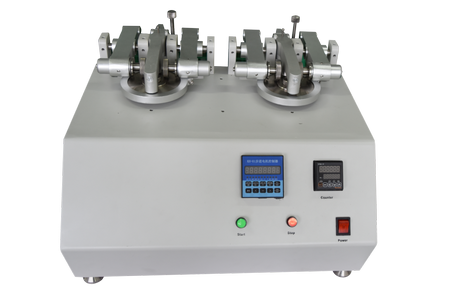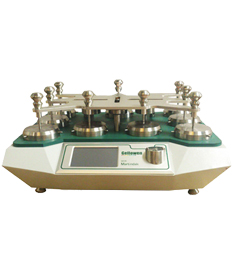
NewsInformation Center
Which machine is preferred for abrasion test?
2023/08/31
When conducting an abrasion test, there are several machines available that can be used depending on the specific requirements and standards to be met. The choice of the preferred machine for an abrasion test depends on factors such as the material being tested, the desired test method, and the applicable industry standards.
We will provide an overview of some commonly used machines for abrasion testing, highlighting their features and applications within different industries. Please note that the following information is a general summary and may not cover every specific aspect of each machine.
The Taber Abrasion Tester is widely used to assess the resistance of various materials to abrasion. It consists of a rotating turntable on which the test specimen is placed. Abrasive wheels, such as H-18 or CS-10, are attached to the turntable and apply a specified load on the specimen surface during rotation. This machine is commonly used to evaluate the abrasion resistance of coated surfaces, textiles, plastics, and other materials.


The Martindale Abrasion Tester is primarily used for evaluating the abrasion resistance of textiles and fabrics. It involves rubbing or oscillating test samples against standard abrasive materials, such as wool fabric or abrasive papers, under a specified load. The number of rubs required to reach a visible change in the specimen's appearance or to cause fabric failure is recorded. This machine is often used in the textile industry to assess the durability and performance of woven, knitted, or non-woven textiles.


3. Crockmeter:
The Crockmeter, also known as the wet and dry rub tester, is designed to assess the colorfastness and resistance to rubbing of dyed or printed fabrics. It involves rubbing the specimen against a standard fabric or a dry/wet abrasive surface using a specified load. The machine measures the color transfer or staining on both the test specimen and the rubbing material. This test is commonly used in the textile and apparel industries to ensure color fastness in garments and other textile products.


4. Oscillating Sand Abrasion Tester:
The Oscillating Sand Abrasion Tester is primarily used to evaluate the abrasion resistance of coatings, paints, and other protective layers on various surfaces. It involves applying a controlled flow of abrasive particles, such as quartz sand, onto the test specimen's surface. An oscillating arm moves the abrasive particles back and forth across the specimen under a specified load. This machine helps assess the durability and wear resistance of protective coatings in industries like automotive, aerospace, and construction.
5. Falling Sand Abrasion Tester:
The Falling Sand Abrasion Tester primarily measures the abrasion resistance of flat, elongated surfaces, such as glass, plastics, or painted panels. It involves the controlled release of abrasive particles, usually silica sand, from a hopper onto the test specimen. The falling sand wears away the surface of the material, simulating the abrasion encountered in real-world scenarios. This machine is widely used in the glass industry and automotive manufacturing to assess the durability of glass surfaces, coatings, and decorative films.
6. DIN Abrasion Tester:
The DIN Abrasion Tester, also known as the Akron Abrader, is designed to evaluate the abrasion resistance of rubber compounds, elastomers, and other flexible materials. It involves rotating a rubber specimen against an abrasive wheel under a specified load. The machine measures the volume loss of the specimen and provides an indication of its resistance to abrasion. This test is commonly used in the rubber industry to assess the quality and performance of rubber formulations intended for various applications.
It is important to note that each machine mentioned above is designed for specific testing purposes within particular industries. Users should consult the relevant standards and testing specifications to determine the most appropriate machine for their specific application. Additionally, it is recommended to follow the manufacturer's guidelines and proper testing procedures to ensure accurate and reliable results.
In conclusion, the preferred machine for an abrasion test depends on various factors, including the material being tested, the desired test method, and the applicable industry standards. The Taber Abrasion Tester, Martindale Abrasion Tester, Crockmeter, Oscillating Sand Abrasion Tester, Falling Sand Abrasion Tester, and DIN Abrasion Tester are some commonly used machines for different abrasion tests. These machines have specific features and applications, and their selection should align with the desired testing outcome and industry requirements.
Previous: Face mask flame retardant tester testing and analysis
N e x t : Most Popular Button Snap Push Pull Tester



